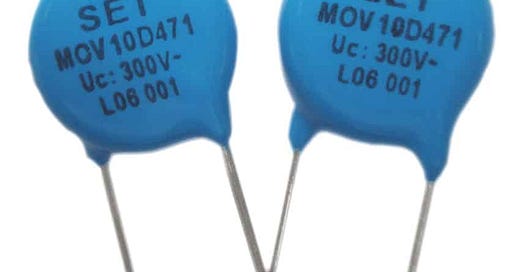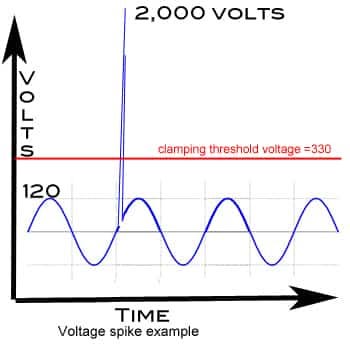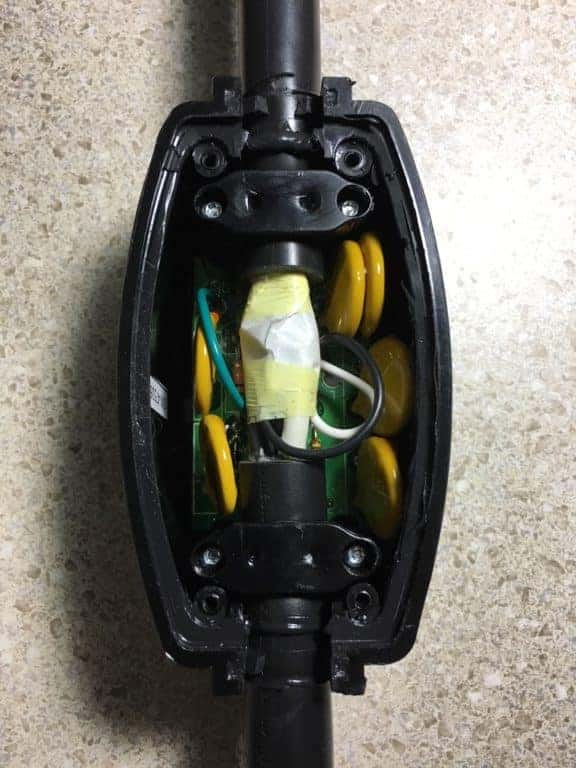Surge Protectors and Joules and MOVs, oh my!
What do all these words mean? Here’s the basics of what’s inside a surge protector…
Dear Mike,
After reading all your articles about voltage problems, I’m now in the market for a surge protector but a little confused by all these Joule numbers. Some are rated at 1,400 Joules of protection, while others are 2,100 or even 4,200 Joules.
So first of all, how do you pronounce Joules, and just what are they? If these gadgets are so important, how come RV manufacturers don’t build surge protectors into their RVs at the factory? —Russ
Dear Russ,
You sure ask a lot of questions, which shows me you’ve been doing your homework. So I’ll answer them in order.
First of all, Joule is pronounced just like Jewel, those sparkly things that cost so much. And since you asked, each Joule is equal to 1 watt-second of energy. So 1 watt of energy for 10 seconds equals 10 watt-seconds, which equals 10 Joules. Just as 10 watts of energy for 1 second equals 10 watt-seconds or 10 Joules. And 1,000 watts for 1 second equals 1,000 Joules, etc. It’s a linear relationship so basic addition and multiplication is all the math you need.
The MOV Squad…
Next, inside of every surge protector is something called a MOV, which is an acronym for Metal Oxide Varistor. The job of the MOV (pronounced like Mod, from the Mod Squad), is to clamp any dangerous peak voltage surges that might come in your shore power line. It would take at least a few articles to explain all the possible causes of these voltage surges and how to stop them, so for now we’ll just concentrate on the energy absorption aspect of the MOV devices inside a surge protector.
Peak Performance
Each MOV device has two important ratings. Peak voltage is how high the surge voltage is allowed to get before the MOV goes into action and shorts (clamps) it out. Don’t worry about that one for now. But MOVs are also rated for Joules of energy absorption. You can imagine that a small voltage surge might only cause a small amount of energy to be absorbed when it’s clamped by a MOV, while a large voltage surge would cause a large amount of energy absorption, and you would be right. A standard size MOV device like you find in a typical surge protector is rated for 350 Joules.
It all adds up
So how do the manufacturers get higher Joule ratings? Well, you can put a number of 350 Joule MOV devices in parallel to increase the total amount of energy dissipation. Here’s what the inside of a surge protector with 2100 Joules of surge protection looks like. Note there are six (6) MOV devices inside, each one rated for 350 Joules. A little arithmetic shows us that 6 x 350 = 2,100. Yes, six MOVs times 350 Joules per MOV equals 2,100 Joules total of surge protection in this case.
As far as surge protection from voltage surges go, more Joules are better. That’s because all MOV devices are sacrificial. That is, a MOV rated for 350 Joules can take a single 350 Joule hit from a surge, or it can take ten 35 Joule hits. And after it’s had all the voltage surges it’s rated for, the MOV is now worn out and can’t protect your electrical system from voltage spikes any more. That’s why all quality surge protectors have some sort of indicator light to show that their MOV devices are healthy and the surge protection is still working. But once that light goes out you know it’s time to have the MOV devices replaced by the manufacturer. I’ve looked inside of a bunch of different surge protector products, and only the Hughes Power Watchdog had a field replaceable MOV device.
Why doen’t my RV already have one?
Finally, the 64 million dollar question. Why don’t RV manufacturers include some sort of surge protection device in their RVs from the factory? Well, it’s all about the money. I’m sure that Surge Guard, Progressive and Hughes would all love to put one of their surge protectors in every new RV. But it’s a hard sell because that would increase the cost of every new RV in an already highly competitive market. So unless all of you ask for it, the chance of this sort of thing happening is pretty slim.
But as I continue to educate you all about RV electrical safety maybe the NEC and RV manufacturers will get the message. Until then, you’ll need to purchase your own surge protector. And yes, I think that EVERY RV needs an advanced surge protector.
I’ll do more demonstrations on basic vs. advanced surge protectors in my RVelectricity seminars around the country as well as online videos.
Let’s play safe out there… Mike









I have seen some high end motorhomes come from the factory with surge protection built into the automatic transfer switch. Often the ones with RV CAN Communications built in. The downside to that is that they are much more expensive to replace if the ATS goes bad.
Good article. My guess is since the surge protector's method of protection can reach sacrificial, it's better to have it installed at the power pole rather than inside the RV. Plus, being portable, one can use it to verify the power pole before parking in the site and connecting to the RV.